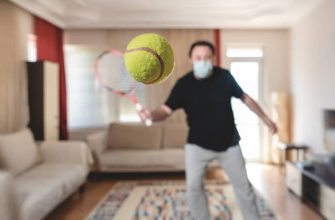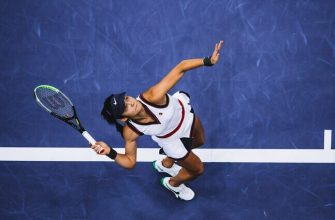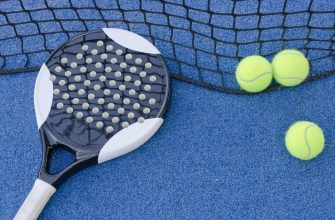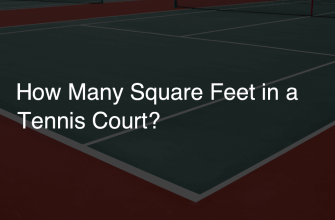As tennis athletes strive to perform at their peak, training is essential. Both the physical and mental demands of tennis require careful preparation. A well-rounded regimen will build key aspects of fitness like strength, agility, flexibility and endurance. This enables players to move powerfully yet efficiently on the court.
Tennis also requires lightning reflexes, tactical thinking and mental toughness. Dedicated training develops a competitive edge as well as the stamina to compete at a high level. The training methods of top tennis pros provide insight into how players hone elite skills.
This article will explore how tennis players train their bodies and minds to meet the rigorous demands of the sport. Whether playing for fun or competing professionally, tennis training maximizes ability. With information on various facets of tennis conditioning, players can create an effective training program.
Physical Training
Cardiovascular training is essential for tennis players to build endurance on the court. During long matches, tennis players may run 3-5 miles or more, requiring a strong aerobic base. Running and biking are common cardio workouts, allowing players to work on sustaining effort over time. Long slow runs of 45-90 minutes help build an aerobic base, while interval training with shorter sprints builds speed and explosiveness.
Tennis specific cardio can include suicide runs across the court and hitting drills between sprints. Building cardiovascular endurance prepares a player’s body for long matches and helps them recover faster between points.
Strength Training

Strength training helps tennis players build power and prevent injuries.
Common strength training exercises for tennis include:
-
Weight Lifting – Lifting weights builds overall muscle strength. Exercises like squats, deadlifts, rows, and presses build core and lower body strength for powerful shots.
-
Resistance Bands – Bands provide portable resistance to strengthen muscles. Rotational band exercises improve torso rotation for serves and forehands.
-
Bodyweight Exercises – Bodyweight moves like push-ups, planks, and lunges strengthen key muscles without equipment. They build functional strength for tennis motions.
A good tennis strength program combines lifting, bands, and bodyweight exercises to develop full-body power. A stronger physique resists fatigue and injury during long matches.
Agility Drills
Agility is crucial for tennis players to move quickly across the court and react to shots. There are various drills tennis players can do to improve their agility.
Ladder drills involve footwork patterns like hopping, shuffling, and jumping over a ladder laid on the ground. This helps with coordination and developing quicker foot speed.
Cone drills are another common agility exercise. These involve arranging cones in patterns on the court and then having the player run through the cones, changing direction rapidly. This builds lateral speed and improves reaction time.
Reaction drills also boost responsiveness. One example is having a partner randomly call out a side of the court while hitting balls. The player must then sprint to that side and hit a return. Repeating these reaction drills hones reflexes.
Overall, agility training allows tennis players to reach shots faster and dance around the court with better movement. A variety of ladder exercises, cone drills, and reaction training can all contribute to improved quickness.
Hitting Drills
Hitting drills are a critical part of a tennis player’s training regimen. These drills allow players to groove proper stroke mechanics and develop muscle memory for shots like the forehand, backhand, volley, and serve.
Most pros incorporate targeted drills that isolate certain strokes. For example, players may spend time at the baseline just working on topspin forehands crosscourt or down the line. Serving drills involve practicing different serves like flat, slice, or kick serves to various targets on the court. Volley drills work on quick reflexes at net and angling the ball away from opponents.
Footwork is also a major emphasis of hitting drills. Tennis players do lateral shuffles to move side-to-side while maintaining proper ready position. They also practice split steps for exploding forward to attack short balls. Fitness ladder and cone drills build light, quick footwork.
Besides technical refinement, hitting drills also develop stamina, focus, and consistency under pressure. Tennis requires hitting thousands of shots to ingrain proper technique. Drills simulate match play by incorporating feeding, live ball exchanges, and point play. Maintaining form and focus during long, repetitive practice develops match toughness.
By diligently training their strokes through drills, tennis players build versatile, all-court skills. They gain confidence hitting a wide variety of shots under changing circumstances. With disciplined repetition, elite players make difficult shots look effortless.
Mental Preparation

Mental preparation and training is a critical component of success in tennis. Players utilize techniques like visualization, mental focus, and concentration to improve their mental game.
Visualization involves picturing successful points and matches in your mind. Doing this before a match can boost confidence and prepare you mentally for different scenarios. Visualizing can make you feel like you’ve already played and won a point, giving you an edge.
Strong mental focus and concentration are also key. During intense matches, players must block out distractions and internal negative dialogue to stay focused on the present point. This takes practice through concentration drills. For example, having someone read random numbers while trying to rally tests focus.
Maintaining confidence, intensity, and positivity during matches requires dedicated mental preparation. Top players invest as much in their mental game as their physical training.
Flexibility Training
Flexibility training is crucial for tennis players to prevent injury and improve performance. Players need flexibility in their shoulders, back, hips, and legs to execute strokes like service motions and stretching wide for balls.
Common flexibility exercises for tennis players include:
-
Stretches targeted for the legs, hips, shoulders, back, and torso. Tennis requires lunging and quick lateral movements, so having flexibility in the hips and inner thighs is key.
-
Yoga and pilates routines to improve full body mobility and balance. Poses like downward dog, warrior, and triangle work muscle groups crucial for tennis.
-
Foam rolling major muscle groups to relieve muscle tightness. Foam rolling the IT band, hamstrings, quadriceps, and back muscles can aid recovery.
Regular stretching and myofascial release allows for fuller range of motion and can help prevent common tennis injuries like rotator cuff strains or hip flexor pulls. A proper dynamic warm-up and cool-down with flexibility exercises is recommended before and after play.
Recovery

Recovery is a critical component of a tennis player’s training regimen. After intense practices and matches, it’s important for players to allow their bodies to rest and repair.
Some common recovery techniques used by tennis pros include:
-
Ice Baths – Immersing the body in cold water helps reduce inflammation and muscle soreness. The cold causes the blood vessels to constrict, flushing waste products out of the tissues. Ice baths are often used after matches or hard training sessions. Players might spend 5-15 minutes in 50-60 degree water up to their shoulders.
-
Massage – Sports massage can help loosen tight muscles, improve flexibility, and reduce muscle tension. Massage helps increase blood flow to the muscles, enhancing recovery. Many pros get regular sports massages to help their bodies bounce back faster.
-
Rest Days – Taking days completely off from training allows the muscles time to fully recover and repair any microtears. 1-2 rest days per week helps prevent overtraining and burnout. During rest days, active recovery exercises like walking or foam rolling can be done.
Getting adequate sleep, keeping hydrated, eating nutritious foods, and doing light active recovery on rest days also helps players recover optimally. Paying attention to proper recovery allows tennis pros to keep up with the physical demands of the sport.
Nutrition
For tennis players, nutrition is key for performance and recovery. Proper nutrition provides energy to perform at a high level during long matches and helps the body recover between matches.
Hydration is incredibly important since tennis involves prolonged cardiovascular exercise in hot conditions. Dehydration can quickly cause fatigue, cramps, dizziness and impaired performance. Tennis players should drink about 7-10 ounces of fluid every 10-15 minutes of play. Electrolyte drinks like sports drinks can help replenish sodium lost in sweat.
Eating foods that provide long-lasting energy from carbohydrates is key. Complex carbs from whole grains, fruits, vegetables and legumes give a slow and steady source of glucose for energy production and to maintain blood sugar. Protein foods like lean meats, eggs, nuts and dairy aid muscle repair and recovery between matches.
After matches, quickly refueling carbohydrates and protein helps maximize recovery. Meals and snacks high in carbs and protein such as whole grain sandwiches with turkey, fruit smoothies with protein powder, oatmeal with Greek yogurt, and rice bowls with chicken or tofu can speed recovery.
Conclusion
Tennis players need to incorporate a variety of training methods in order to perform at their best on the court. Physical training like strength training, agility drills, and hitting drills help build the strength, speed, and skills needed to excel. Mental preparation is also key – players must work on concentration, visualization, and positive self-talk to stay focused during matches.
Flexibility training allows players to improve their range of motion for serves and groundstrokes. Proper recovery like stretching, massages, and rest days helps prevent injuries. Nutrition provides the fuel for demanding practices and matches. By combining all these elements, tennis players can continue improving their game and reach new levels of performance. With hard work and smart training, the possibilities on the tennis court are endless.








